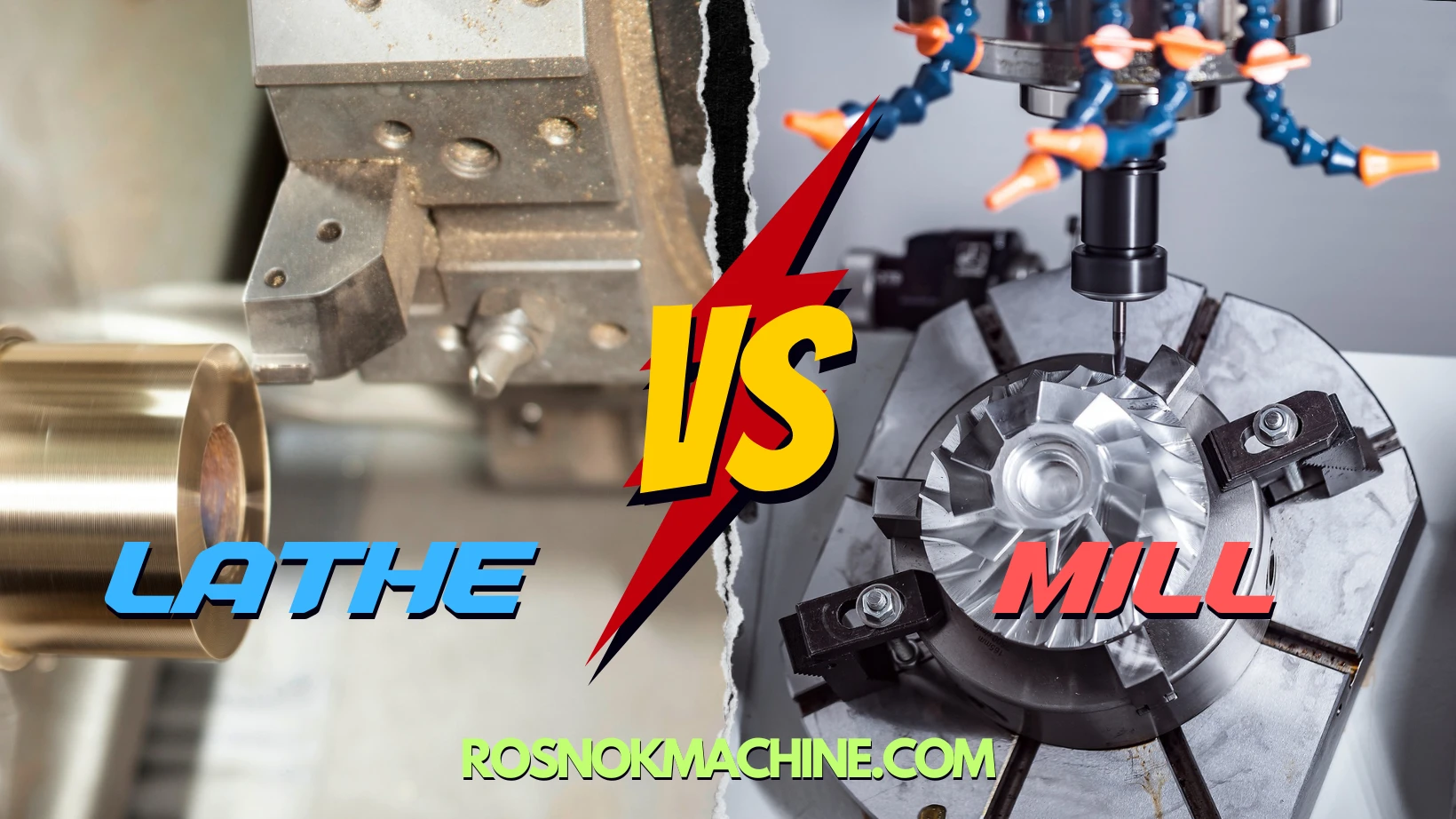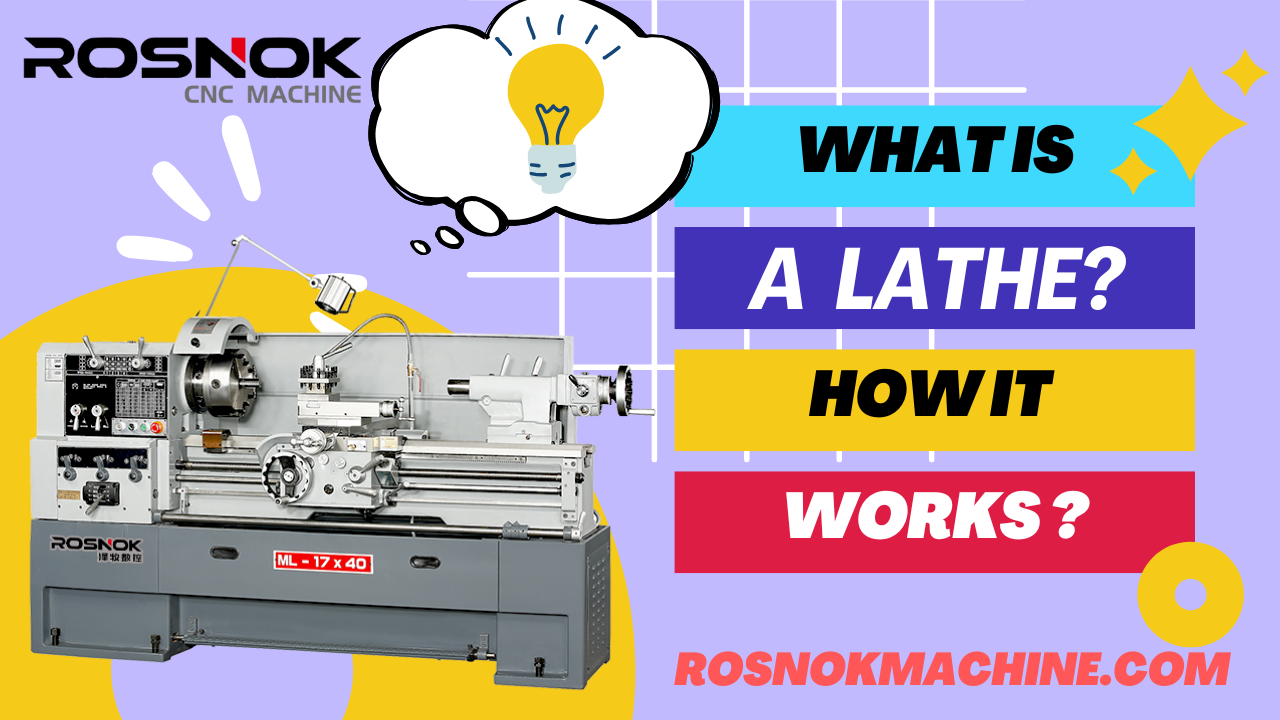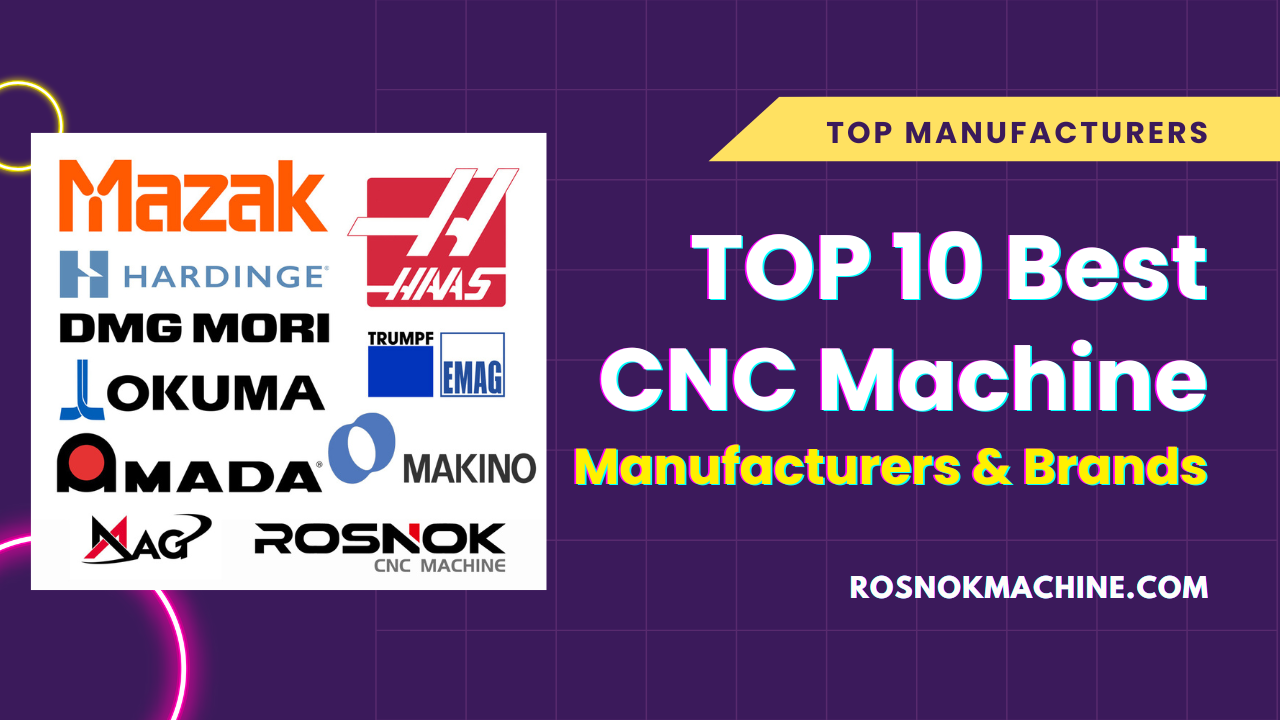Have you ever wondered what is a grinding machine and why it’s essential in metalworking? What core parts does it include? How does it really work? How does it remove material so precisely—and what enables it to achieve such tight tolerances and surface finishes? What types of grinding machines exist, and when should each be used?
A grinding machine is a precision machining tool that removes material from a workpiece using a rotating abrasive wheel. Unlike cutting tools, it doesn’t shear the metal—it grinds it down by friction and abrasion, enabling extremely fine surface finishes and exact dimensional control. These machines are vital in processes where tight tolerances and smooth surfaces are required, especially in automotive, aerospace, mold, and tooling industries. In short, it’s the backbone of modern precision engineering.
This article will walk you through the structure, working principle, key types, and real-world applications of grinding machines—so you can fully understand how they shape modern manufacturing.
What Is a Grinding Machine?
A grinding machine is a machine tool designed to make metal surfaces smoother, flatter, or more precise—by rubbing them down using a spinning wheel covered in abrasive particles. You can think of it as industrial-level “sanding”, but with much higher precision. Unlike a lathe that cuts metal by rotating the part, or a milling machine that shaves it off with sharp teeth, a grinder wears down the surface through controlled abrasion. This process creates ultra-fine finishes and extremely tight tolerances that most other machines simply can’t match.
That’s why grinding machines are widely used to produce parts that require perfect flatness, sharp dimensional accuracy, or mirror-like surface quality—like engine components, molds, surgical tools, or bearing rings. If you want to take a metal part from “almost done” to “flawless,” a grinder is the tool that gets you there.
In the next sections, we’ll break down how these machines actually work, what parts they’re made of, and how to choose the right type for your job.
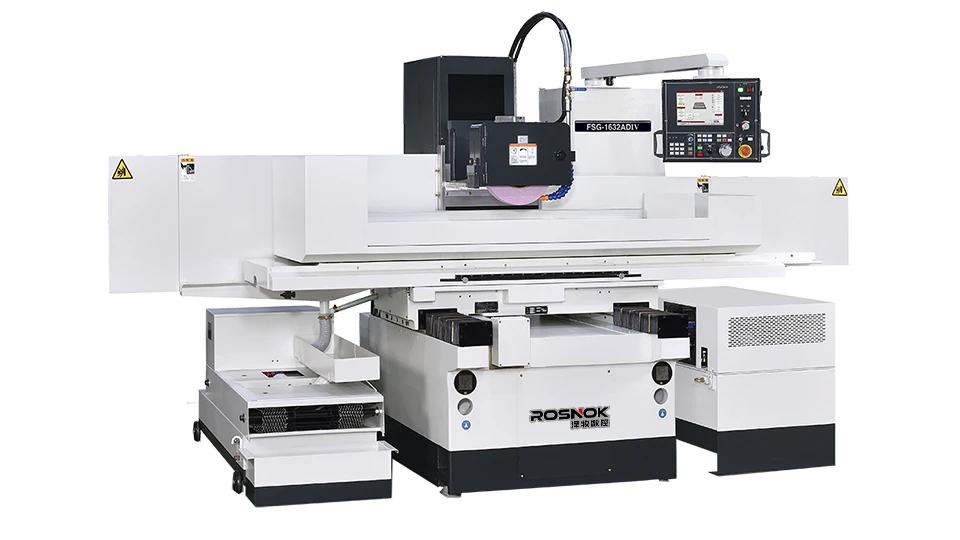
How Does a Grinding Machine Work?
Grinding machines remove material through a unique mechanism: controlled abrasion, not cutting. Unlike milling or turning, where sharp tools shear off metal chips, a grinding machine wears the surface down gradually using a rotating abrasive wheel. Each grain on the wheel acts like a tiny cutting edge—but instead of slicing, it scrapes with immense force at high speeds.
The grinding action relies on three main elements working in harmony: the abrasive wheel, the contact pressure, and the machine’s rotation speed. As the wheel spins, its hard particles press against the workpiece surface, fracturing microscopic layers and leaving behind a smooth, precise finish.
To maintain dimensional accuracy and prevent overheating, most machines include coolant systems that spray fluid over the grinding zone. This reduces friction, washes away debris, and extends the life of both the workpiece and the wheel. Pressure and feed rate must also be carefully controlled—too much force can burn the surface, too little results in poor material removal.
In the next sections, we’ll take a closer look at the abrasive wheel—the real “tool” of the machine—and explain exactly how it shapes and removes metal at the microscopic level.
The Role of Abrasive Wheels
In a grinding machine, the abrasive wheel is the actual cutting element—it plays the role that a blade or bit would in other machine tools. But unlike a single cutting edge, a grinding wheel contains thousands of hard abrasive grains bonded together, each acting like a micro-tool.
These wheels are made from materials such as aluminum oxide (Al₂O₃), silicon carbide (SiC), cubic boron nitride (CBN), or diamond. The choice of material depends on what you’re grinding—CBN, for example, is ideal for hardened steels, while diamond works best on ceramics or carbide.
Each wheel also has a grit size, which determines how fine or coarse the finish will be. Smaller grit (e.g., #60) means more aggressive material removal; larger grit (e.g., #400+) gives smoother surfaces. The bonding method—vitrified, resin, metal, etc.—controls how quickly the wheel wears and how rigid it is during cutting.
What makes abrasive wheels unique is that they self-sharpen. As the outer grains wear down, they fracture and expose new sharp edges underneath, maintaining cutting efficiency. This makes grinding ideal for maintaining consistent performance over longer machining cycles without frequent tool changes.
Material Removal Process Explained
So how does grinding actually remove metal? At the microscopic level, the process looks less like cutting and more like scratching, fracturing, and plowing. Each abrasive grain digs into the surface, breaking small fragments off with extreme force.
As the wheel spins at high RPM, the tips of these grains make contact with the workpiece under pressure. This contact generates localized heat and friction, which helps dislodge tiny chips of material—called swarf—from the surface. These chips are much smaller than those from milling or turning.
Key factors that influence this removal include:
- Contact area size between the wheel and the workpiece
- Feed rate and depth of cut
- Wheel hardness and grit type
- Coolant flow, which prevents burning and distortion
Importantly, the removal is gradual but extremely precise. That’s why grinding is often used as the final finishing operation, especially when parts need mirror finishes or micron-level tolerances.
The result? A surface that’s not only flat and smooth, but dimensionally accurate down to a few microns—perfect for critical components in aerospace, medical devices, and high-precision tools.

Main Components of a Grinding Machine
To fully understand what is a grinding machine, we need to look beyond how it works and focus on what it’s made of. Each grinding machine consists of several essential components that work together to deliver precise and repeatable material removal. These parts are carefully designed to maintain stability, accuracy, and efficiency during high-speed operation. Let’s explore the key components that make up the structure of a grinding machine and how each one contributes to its function.
Grinding Head & Motor
The grinding head is the heart of the machine. It holds the abrasive wheel and is powered by an electric motor that drives it at high rotational speeds. This rotation creates the friction necessary for material removal. The motor’s power rating and torque characteristics determine how much force can be applied during grinding, directly affecting how efficiently tough materials like hardened steel or titanium can be processed.
Just as important is the spindle system inside the grinding head. Its alignment, rigidity, and balance play a critical role in keeping the wheel rotation smooth and vibration-free. Any deviation in spindle accuracy can lead to surface defects, poor dimensional control, or premature wear on the wheel. In high-precision environments, such as mold making or bearing manufacturing, even a slight misalignment can make a part unusable. That’s why many high-end grinding machines feature dynamically balanced spindles and multi-axis control to fine-tune wheel position and angle during grinding.
Worktable & Clamping System
The worktable is where the workpiece is mounted and guided into position during grinding. Depending on the machine type, this table may move linearly (back and forth) or rotate to accommodate cylindrical shapes. To ensure machining accuracy, the movement of the table must be smooth, rigid, and free of backlash.
Equally vital is the clamping system. This can include magnetic chucks, mechanical clamps, hydraulic fixtures, or vacuum-based setups. A poor clamping setup can cause even the most precise machine to produce inconsistent results. If the part vibrates, slips, or shifts during grinding, surface quality and dimensional accuracy suffer. In some high-precision applications, automatic clamping systems with force sensors are used to maintain repeatability between batches.
In production environments where repeatable accuracy and fast changeovers are critical, a stable and smart fixture setup is just as important as the grinding head itself.
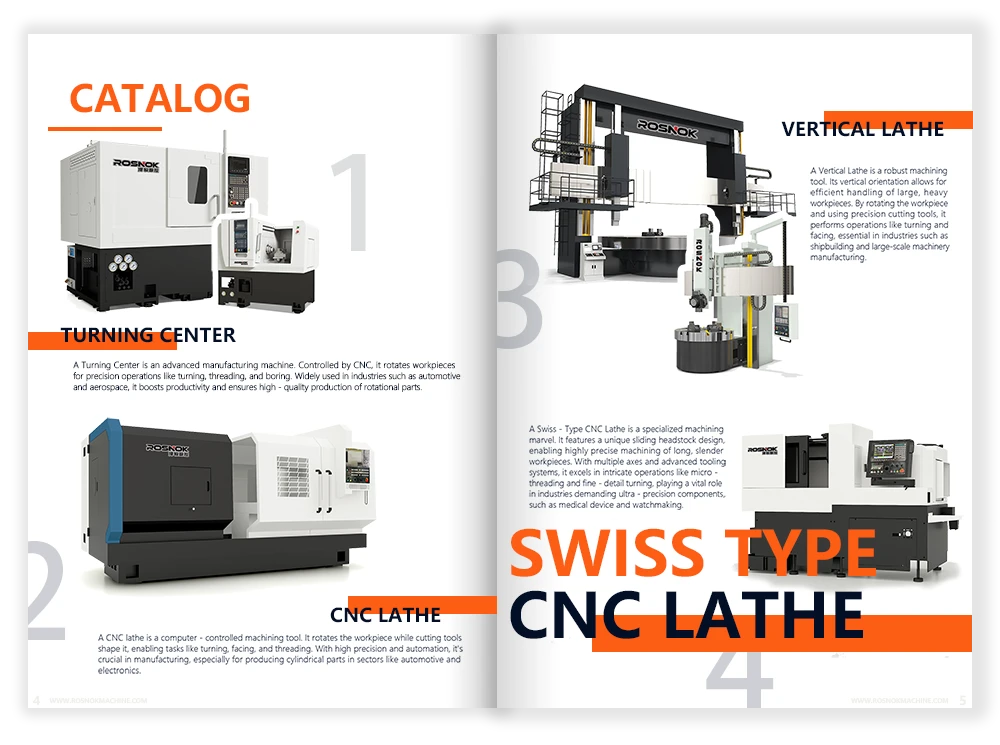
Lubrication & Cooling Systems
Grinding generates a lot of heat due to the friction between the abrasive wheel and the metal surface. Without proper cooling, this heat can burn the surface, deform the workpiece, and damage the wheel. That’s why every industrial grinding machine is equipped with a coolant system.
Coolant—usually a water-based emulsion or synthetic fluid—is sprayed directly onto the contact zone. It lowers the temperature, flushes away swarf (fine metal particles), and reduces wheel wear. A good coolant system ensures both thermal stability and surface finish quality.
Beyond cooling, lubrication systems are equally essential. These systems keep the machine’s guideways, ball screws, and bearings running smoothly. If lubrication fails, not only does machine wear accelerate, but positioning accuracy also suffers. Modern CNC grinding machines often have centralized or automatic lubrication systems that monitor oil flow and alert operators if anything goes wrong.
Together, the cooling and lubrication systems are the hidden guardians that ensure long-term machine reliability and consistent output.
Wheel Dressing System
Over time, the abrasive wheel becomes dull or clogged with material. This reduces its cutting efficiency and causes surface finish problems. To fix this, grinding machines are equipped with a wheel dresser—a system that reshapes or refreshes the wheel surface.
There are manual and automatic dressing systems. The goal is always the same: restore the wheel’s geometry and expose fresh, sharp abrasive grains. Some advanced machines integrate dressing cycles into the grinding program to maintain consistency in long production runs.
Control System & CNC Interface
In modern grinders, the control system is the brain of the operation. It handles everything from wheel speed and table movement to dressing intervals and coolant flow. CNC control makes it possible to execute complex grinding cycles with repeatable accuracy.
For example, a CNC grinder can precisely control the feed rate down to microns, run automated part probing, and apply adaptive feedback based on sensor inputs. Compared to manual grinders, CNC systems reduce human error and drastically increase productivity and consistency.
Machine Bed & Structural Stability
All the above systems are mounted on the machine bed—essentially the backbone of the grinder. It’s typically made from cast iron or welded steel and designed to absorb vibration and resist thermal expansion.
A rigid, stable bed ensures that the wheel and the part stay aligned under all cutting conditions. This is especially critical when grinding large, heavy workpieces or working with tight tolerances. Poor base design leads to micro-movements and chatter, which show up as waviness on the part surface.

Types of Grinding Machines
Grinding machines come in many forms, each built to handle specific shapes, sizes, and materials. The choice of machine depends on what kind of surface you need to produce, the geometry of your part, and the production volume. Here are the five most common types used in modern workshops and factories.
Surface Grinding Machines
Surface grinders are designed to create highly flat and smooth surfaces. They operate by moving a horizontal abrasive wheel across the workpiece, which is fixed to a reciprocating or rotating worktable. The grinding head descends incrementally with each pass, slowly removing material until the target thickness and surface quality are achieved.
These machines are widely used in mold manufacturing, especially for grinding mold bases, guide plates, and ejector plates. They also serve tool and die workshops that need flat gauges, templates, and surface-critical parts. Typical materials include hardened steel, tool steel, and even ceramic components for electronics.
Most surface grinders feature magnetic chucks to hold ferromagnetic workpieces securely. For non-metallic materials, vacuum chucks or mechanical clamping systems are used. Although they are not suitable for deep or contoured features, surface grinders offer unmatched consistency in flatness—making them a go-to choice for finishing operations.
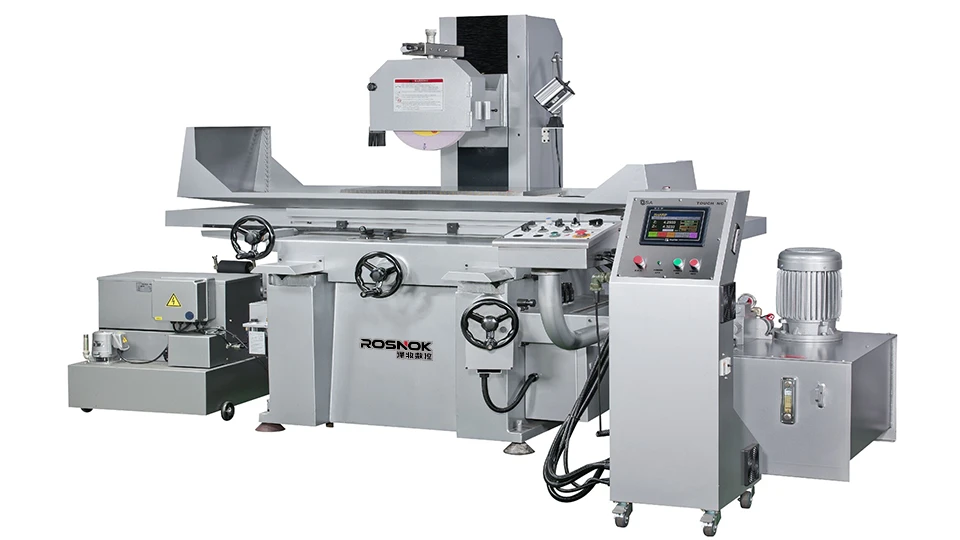
Cylindrical Grinding Machines
Cylindrical grinders are used to process outer surfaces of round or cylindrical components—like motor shafts, hydraulic cylinders, and rollers. The workpiece rotates along its axis while the grinding wheel moves across its surface, either longitudinally or radially. This allows extremely accurate concentricity and roundness to be achieved, even for long parts.
These machines come in two main types: external cylindrical grinders (for the outer surface) and internal cylindrical grinders (for bore grinding). Some advanced models combine both. Cylindrical grinding is common in the production of precision shafts, automotive axles, and heavy-duty rollers in printing or steel industries.
What makes cylindrical grinders special is their ability to hold tight geometric tolerances over long components. They often use centers or chucks to fix the part, along with steady rests to avoid deflection. CNC versions offer programmable movement and automatic compensation, making them ideal for high-volume, high-precision environments.
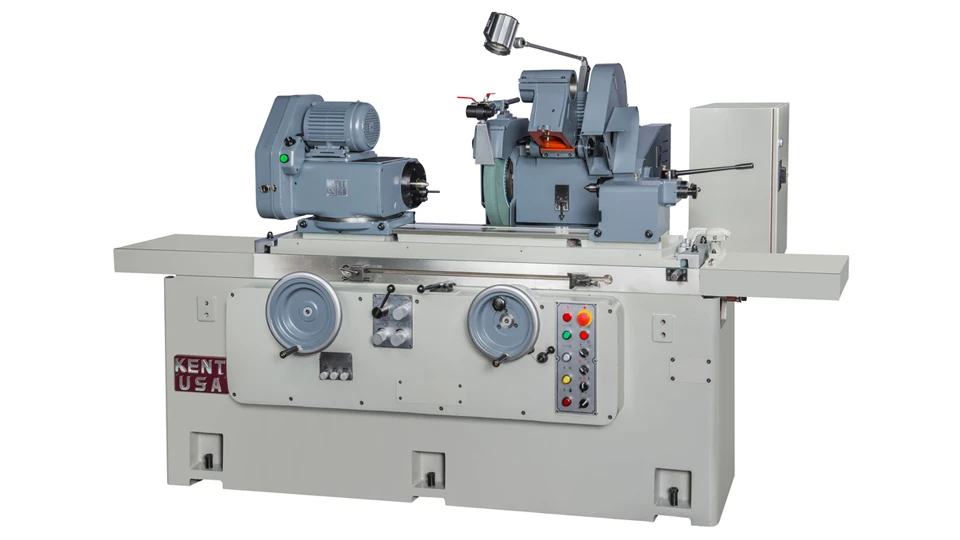
Internal Grinding Machines
Internal grinders are designed to machine internal diameters—like bores, bearing seats, and cylindrical cavities inside a workpiece. The grinding wheel is small and mounted on a spindle that rotates at very high speed, allowing it to reach into narrow or deep holes. The part itself is usually fixed in place or rotated slowly for precision.
These machines are critical for applications where perfect roundness and surface quality are essential, such as precision bushings, bearing races, and aerospace sleeves. The challenge lies in controlling vibration and achieving the required alignment between the spindle and the bore centerline.
Some internal grinders are standalone units, while others are part of a multi-functional grinding machine. They may use special coolant systems and fine-grain abrasive wheels to prevent burning and ensure surface consistency. Due to the complexity of the process, internal grinding often requires experienced setup and high-precision tooling.
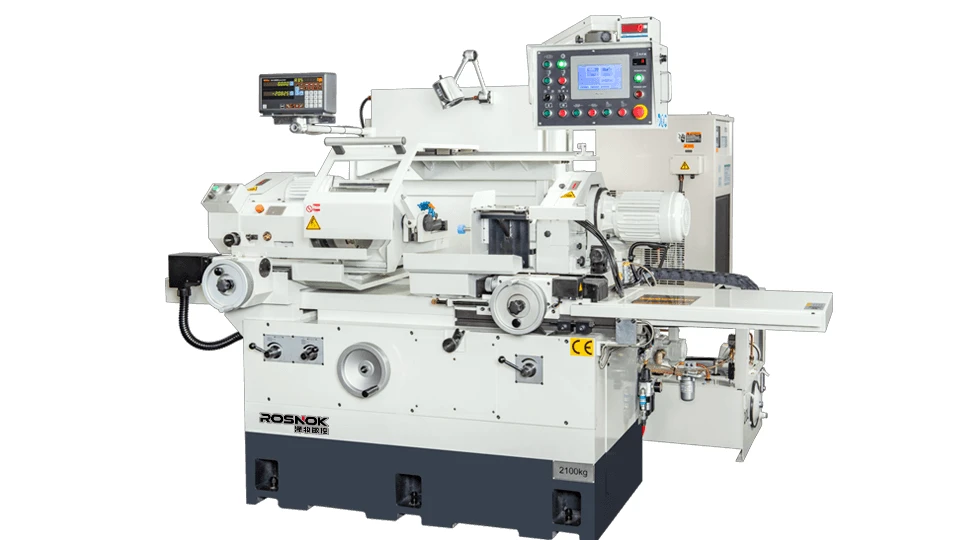
Centerless Grinding Machines
Centerless grinders remove material from cylindrical workpieces without requiring any clamping or fixturing on centers. Instead, the part rests on a work rest blade between two rotating wheels—a grinding wheel and a regulating wheel. The regulating wheel controls the speed and axial feed of the workpiece, while the grinding wheel shapes it.
This configuration enables high-throughput production of small, round parts such as piston pins, bearing rods, and metal dowels. It’s especially useful for producing long bars or small-diameter shafts in continuous, automated cycles with minimal operator involvement.
Centerless grinding is incredibly efficient and repeatable, but it comes with setup sensitivity. The alignment of wheels and positioning of the work rest must be precise. Also, it’s typically limited to straight cylindrical shapes—irregular or stepped geometries are not suitable unless additional support mechanisms are used.
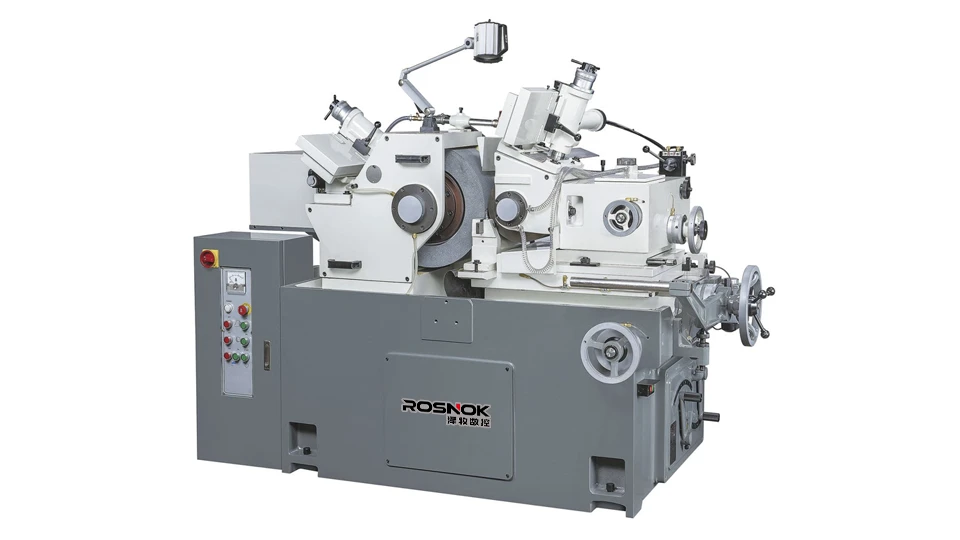
Tool and Cutter Grinders
Tool and cutter grinders are specialized machines used to manufacture and sharpen cutting tools like drills, end mills, taps, and reamers. These grinders are equipped with multiple axes of movement and often feature a rotating spindle that holds the tool at specific angles for precise grinding of flutes, cutting edges, or reliefs.
They are common in mold making, aerospace, and cutting tool manufacturing industries where tool precision directly affects machining quality. Some models are semi-automated, but CNC tool grinders dominate modern applications due to their ability to reproduce complex geometries and maintain tight tolerances consistently.
In addition to sharpening used tools, these machines also create entirely new ones from blanks. With special attachments, they can grind a wide range of geometries—from a basic two-flute drill to complex multi-axis form cutters. The flexibility makes them essential for high-end toolrooms and production lines.

Applications of Grinding Machines Across Industries
Grinding machines aren’t limited to one specific task or industry—they’re used wherever precision, surface quality, or tight tolerances are critical. From mass-produced automotive parts to highly specialized aerospace components and even delicate medical implants, the flexibility of grinding makes it a core process in modern manufacturing. The following sections break down how grinding technology applies across several key sectors, showing exactly why it’s irreplaceable on the factory floor.
Automotive Components
In the automotive industry, grinding machines are essential for producing critical powertrain and drivetrain parts. Components like camshafts, crankshafts, gearbox gears, valve seats, and cylinder liners all demand extremely tight tolerances and mirror-like surface finishes to ensure proper function, efficiency, and durability. Cylindrical grinders are typically used for shafts and sleeves, while surface grinders are employed to finish mating surfaces like engine blocks or transmission housings. Grinding also reduces friction and wear, contributing directly to the longevity and performance of engines and transmissions.
Aerospace Structures
Aerospace manufacturers rely on grinding to meet the industry’s uncompromising standards for dimensional accuracy and material integrity. Aircraft components—such as turbine blades, landing gear parts, and engine casings—are often made from exotic alloys like Inconel or titanium, which are notoriously difficult to machine using traditional cutting tools. Here, grinding excels by maintaining tolerances down to microns and producing flawless surfaces that reduce fatigue and stress concentrations. Centerless and internal grinders are often used to create high-precision fits for rotating components and hydraulic systems.
Medical & Precision Parts
In the medical field, grinding plays a vital role in manufacturing surgical instruments, orthopedic implants, dental tools, and prosthetics. These components not only require biocompatible materials like titanium or stainless steel, but also demand extreme surface smoothness and accuracy to ensure safe use inside the human body. Tool and cutter grinders are used to shape surgical instruments, while surface and cylindrical grinders help achieve the exact contours and finishes required for hip joints or bone screws. Precision is not optional here—it’s a matter of patient safety.
Mold & Die Industry
Grinding machines are essential in the mold and die industry, where surface finish and dimensional accuracy directly affect product quality. Components like cavity inserts, cores, and parting surfaces must achieve ultra-flat, mirror-like finishes to ensure proper mold closure, reduce flash, and maintain part consistency.
Surface and form grinders are often used to machine hardened mold steels such as H13, D2, and SKD11—materials that demand both abrasion resistance and shape stability. Since most molds are heat-treated, the machines must handle hard metals without causing thermal distortion. Controlled cooling and fine feed rates help prevent flaws that could compromise the mold during plastic injection or metal forming. Whether building new dies or reworking old ones, grinding is the last and most critical step to ensure precision and longevity.
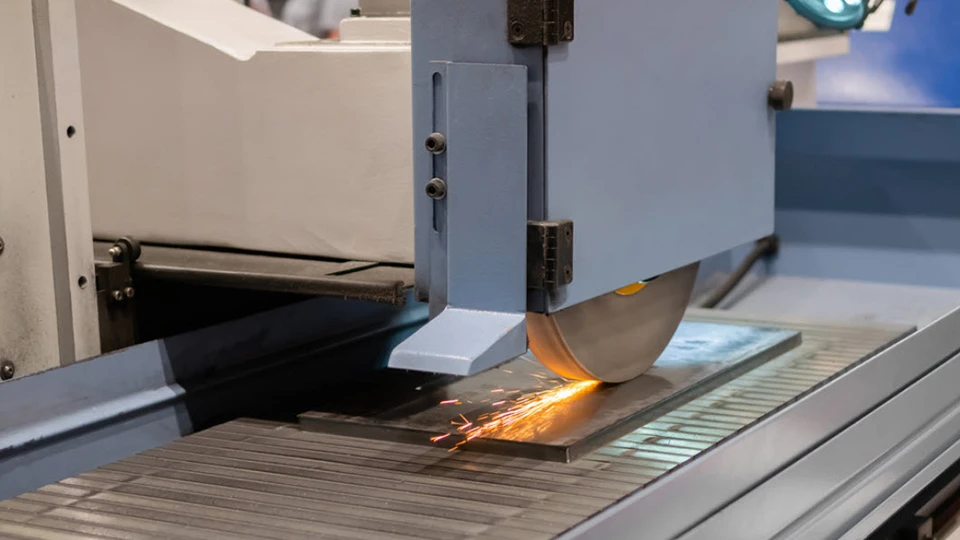
Advantages of Grinding Over Traditional Machining
Grinding offers several critical advantages over traditional machining methods like turning or milling—especially in applications where precision and consistency are non-negotiable. While lathes and mills are excellent for shaping raw materials quickly, grinding machines excel at finishing: they bring parts to their final shape, dimension, and surface quality. In many industries, grinding isn’t just the last step—it’s the only way to meet strict tolerances and surface demands. That’s why it’s often the preferred solution for mass production, hardened materials, and ultra-precise components.
Surface Finish & Tolerance
One of the most outstanding benefits of grinding is the level of surface quality it can achieve. Grinding machines can produce finishes as fine as Ra 0.1 μm—far smoother than what most cutting processes can deliver. This is especially important for parts that require low friction, tight sealing, or cosmetic appeal. In mold making, aerospace, and medical industries, even slight surface imperfections can lead to failure. Grinding ensures exact dimensional tolerances and flawless finishes that meet the highest engineering requirements.
Handling of Hard & Tough Materials
Many parts today are made from materials that are difficult or even impossible to cut using standard tools—like hardened steel, titanium alloys, or technical ceramics. That’s where grinding truly shines. The abrasive action of a grinding wheel can gradually remove these tough materials without creating cracks, stress points, or tool wear issues common in traditional machining. This makes grinding ideal for processing dies, injection molds, hardened shafts, and heat-treated components that demand both strength and precision.
Repeatability in Mass Production
When it comes to high-volume manufacturing, repeatability is everything. A key advantage of grinding machines is their ability to maintain consistent results across hundreds or thousands of parts. Once the setup is dialed in, automated grinding processes deliver uniform surface quality, dimension, and geometry—far beyond what manual machining can ensure. That reliability is crucial in sectors like automotive and electronics, where even minor variations can compromise function or assembly. Grinding helps achieve stable output, low rejection rates, and better cost control in the long run.

Materials Suitable for Grinding
Not every metal—or material—is equally suited for grinding. While grinding machines offer unmatched precision, their effectiveness depends heavily on the hardness, ductility, and thermal properties of the workpiece. Choosing the right material ensures stable removal rates, minimal thermal deformation, and consistent surface finish.
Hardened Steel
Hardened steel, including heat-treated tool steels and bearing steels, is among the most common materials for grinding. These metals are tough and wear-resistant, making them ideal candidates for precision finishing. Grinding can produce accurate dimensions and excellent surface quality without compromising the structural hardness introduced by heat treatment.
Cast Iron
Cast iron is also widely used due to its excellent damping characteristics and consistent structure. Though it’s brittle, its machinability under grinding conditions makes it a standard material in machine bases, gear housings, and heavy-duty structural parts. Surface grinding is particularly effective on gray cast iron and ductile iron.
Aluminum Alloys
Aluminum alloys, while softer, can still be ground with proper wheel selection and lubrication. Because aluminum tends to clog abrasive wheels, coolants and open-structure wheels are often used to maintain clean cutting action. It’s commonly used in the aerospace and electronics sectors where surface flatness is critical.
Titanium & Ceramic Materials
Titanium and ceramic materials require more specialized grinding setups. Titanium’s low thermal conductivity and high reactivity make it difficult to grind without causing thermal damage or wheel loading. Ceramics, on the other hand, are extremely hard and brittle, demanding the use of superabrasives like CBN or diamond wheels, along with rigid machine setups.
Carbide (Superhard Alloys)
When selecting materials for grinding, beginners should start with materials that balance hardness with stability—such as pre-hardened tool steel or gray cast iron. For tougher or high-value components, proper wheel selection, coolant management, and grinding parameters are essential to prevent damage and achieve the desired finish.
Carbide (Superhard Alloys)
Carbide is an ultra-hard material commonly used in molds and cutting tools. With hardness often above HRC90, it offers exceptional wear resistance and dimensional stability. Grinding carbide requires superabrasives like CBN or diamond wheels, along with proper coolant to prevent thermal damage. It’s essential for high-precision tasks like tool regrinding or mold finishing, where durability and accuracy are non-negotiable.
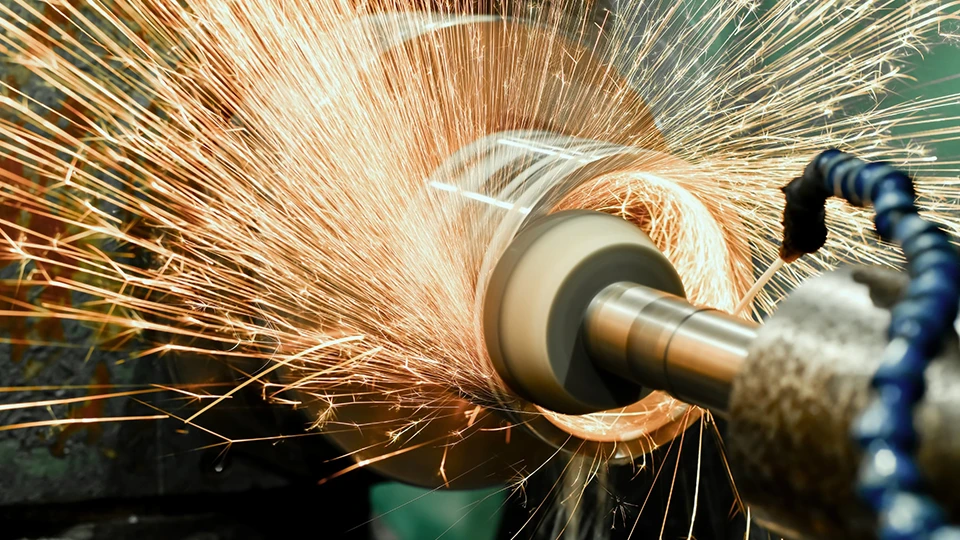
How to Choose the Right Grinding Machine for Your Shop
Selecting the right grinding machine isn’t just a technical decision—it’s a strategic one. For shops working under tight budgets, high-precision demands, or growing production needs, choosing the right machine can directly impact your delivery time, quality control, and profit margin. Whether you’re new to grinding or upgrading an existing setup, a clear selection process helps you avoid costly mismatches.
Identify Your Part Geometry & Tolerances
Before looking at machine catalogs, you need to understand your part. What shape is it? Is it flat, cylindrical, or internal? What level of dimensional accuracy and surface finish is required? For example, engine valve stems require concentricity within microns, while mold bases may prioritize ultra-flat surfaces.
Also consider the size and weight of your parts. Large components may need heavy-duty grinders with long worktables, while small precision parts demand fine control over feed rate and wheel speed. Your tolerances will determine not just the machine type, but also the spindle quality, axis stability, and whether CNC control is necessary.
Match Grinding Machine Type to Task
Once your part requirements are clear, you can match them to specific grinding machine types. Surface grinders are ideal for flat parts like plates, templates, or mold inserts. Cylindrical grinders handle shafts, rollers, and other round workpieces with high precision. If your focus is internal bores—like bearing seats—then an internal grinder is the better choice.
For production lines or bar stock processing, centerless grinders offer unbeatable speed and consistency. Meanwhile, if you’re in the toolmaking business, a tool and cutter grinder is essential for reshaping drills, end mills, and custom cutters.
Think of machine selection as application-first: don’t chase the most complex model—chase the one that solves your specific job most effectively.
Support, Maintenance, and Spare Parts
A grinding machine is a long-term investment. What happens after the machine arrives is just as important as how it performs on day one. Does the supplier offer reliable technical support? How quickly can they respond if something goes wrong?
Make sure critical components—like spindle motors, guideways, control panels, and abrasive wheels—are readily available. Imported parts with long lead times can cause extended downtime. Also check whether the machine’s software is easy to update, and whether local technicians are trained to maintain it.
Choosing a machine with stable service and spare part support will save you more in the long run than chasing short-term savings from unknown suppliers.
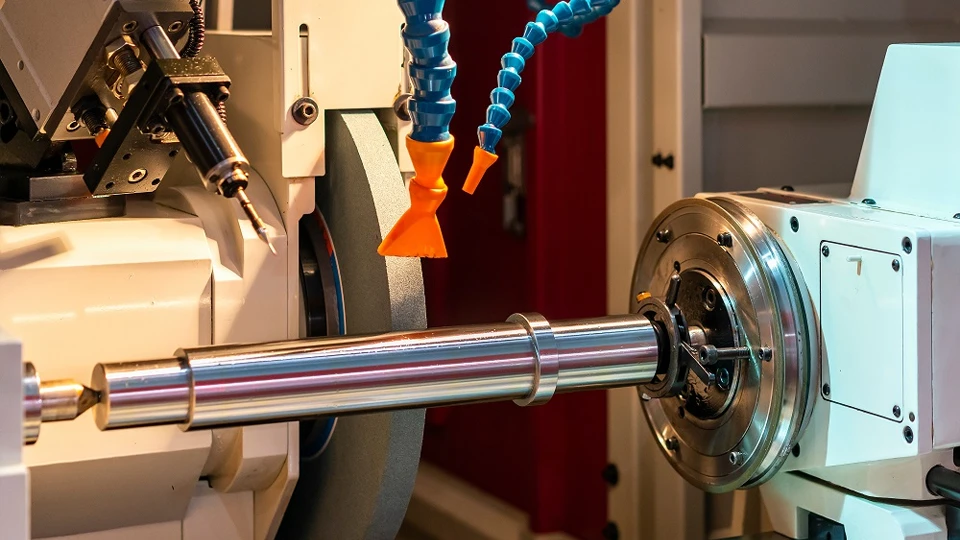
Daily Maintenance & Care of Grinding Machines
Keeping a grinding machine in optimal condition requires more than occasional servicing—it demands consistent, structured maintenance. Below are the core daily and periodic tasks every shop should follow to ensure longevity, accuracy, and process stability.
Cleaning the Machine After Use
At the end of each shift, remove grinding dust, swarf, and coolant residue from the worktable, covers, and wheel guard. This prevents buildup that could enter guideways or motors. Pay extra attention to exposed moving parts and sensors. A clean machine is a reliable machine.
Lubricating Guideways and Moving Parts
Regular lubrication of sliding surfaces—especially guide rails and cross slides—is critical. Use the recommended grade of oil and follow the machine’s lubrication chart. Many machines feature automatic lubrication, but visual checks help confirm proper oil flow and tank levels.
Checking Spindle Runout and Vibration
Spindle accuracy directly affects part finish. Use a dial indicator to check radial and axial runout periodically. If the spindle shows excessive TIR (Total Indicator Reading), it may need rebalancing or bearing service. Listen for abnormal sounds or vibrations during operation—these are early signs of internal wear.
Maintaining Coolant Quality
Coolant keeps the grinding zone cool and flushes away debris. Inspect concentration, clarity, and flow daily. Clean the tank regularly and replace dirty filters to prevent abrasive particles from recirculating. Neglecting coolant leads to overheating, surface burns, and poor wheel life.
Dressing the Grinding Wheel
As grinding wheels wear, they become loaded and lose shape. Dressing removes dull grains and restores cutting sharpness. For precision work, diamond dressers or rotary dressers are used depending on the wheel material. Daily or per-job dressing ensures consistent cutting pressure and surface quality.
Monthly Preventive Inspections
In addition to daily routines, conduct deeper monthly checks: inspect belt tension, clean air filters, test emergency stop switches, examine hydraulic and pneumatic connections, and calibrate key sensors. This helps detect wear before it becomes a costly breakdown.
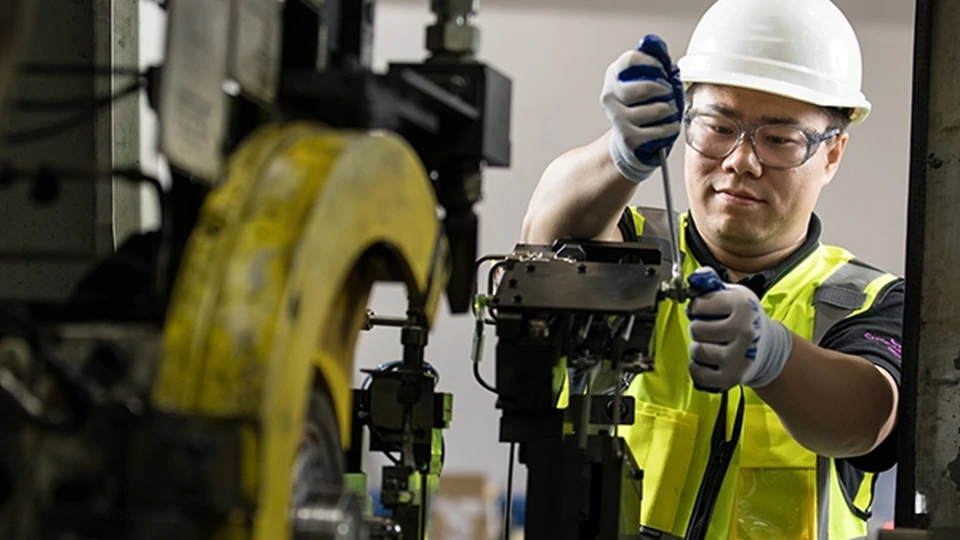
Conclusion
Grinding machines play a critical role in modern precision manufacturing—far beyond just smoothing surfaces. Throughout this guide, we’ve unpacked their definition and core concept, clarified how grinding removes material through abrasive friction rather than cutting, and examined the internal structure that powers this unique process. From surface grinders to cylindrical and tool grinders, each machine type serves distinct geometric needs. We also explored industry-specific applications—from automotive to aerospace and medical fields—along with grinding’s key advantages: superior surface finish, ability to machine hard materials, and consistent repeatability.
Whether you’re selecting materials or choosing the right machine configuration, mastering the principles of grinding is essential for delivering ultra-precise, production-ready components.
At Rosnok, precision is more than a specification—it’s a principle. As a trusted CNC machine tool manufacturer serving industries across Russia, Europe, and Asia, we engineer grinding solutions that combine durability, versatility, and accuracy. Our lineup of high-performance CNC grinders is designed to meet the evolving challenges of modern production. If your shop demands results that push the limits of tolerance and finish, the right grinding machine—built for your needs—is a step away.



